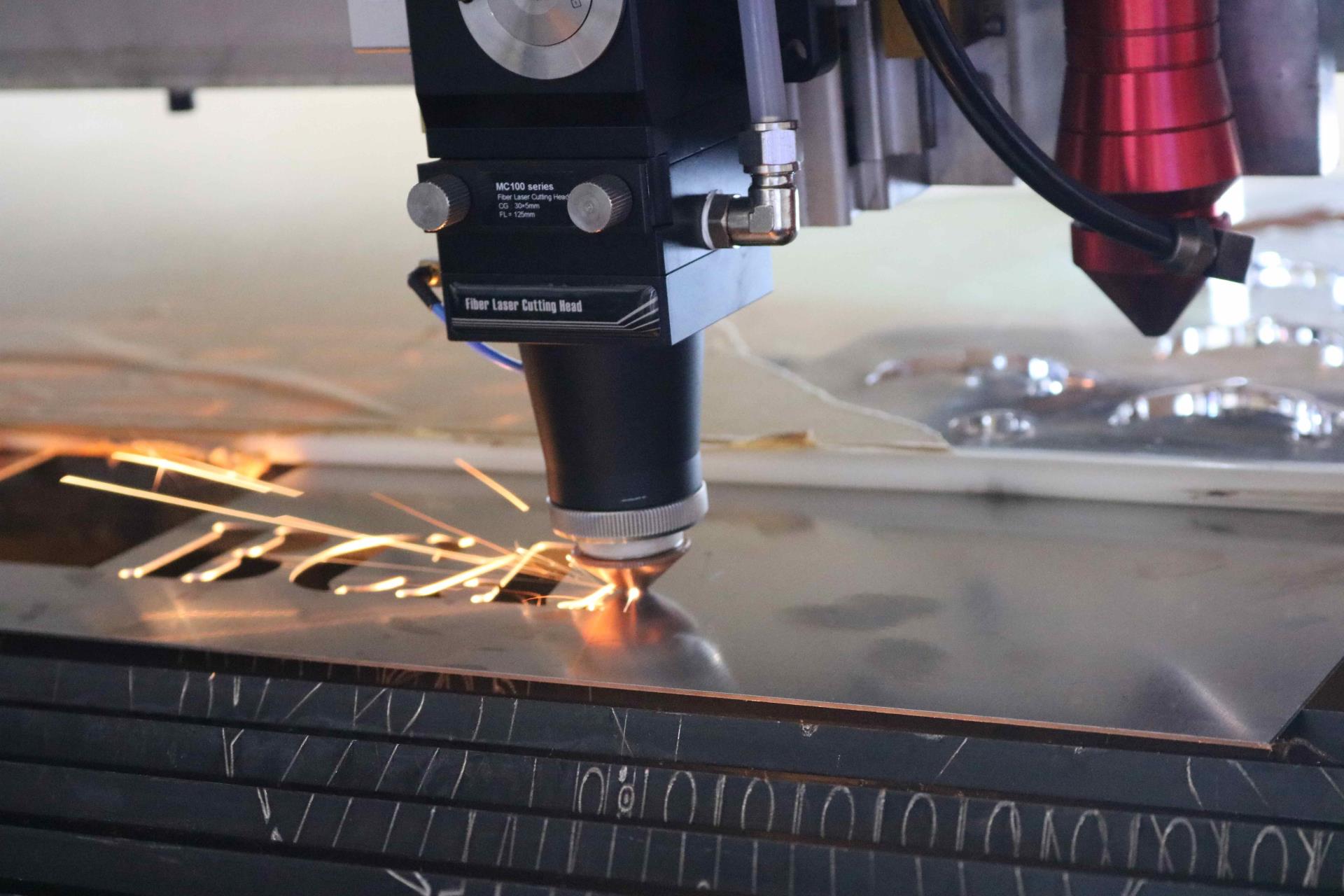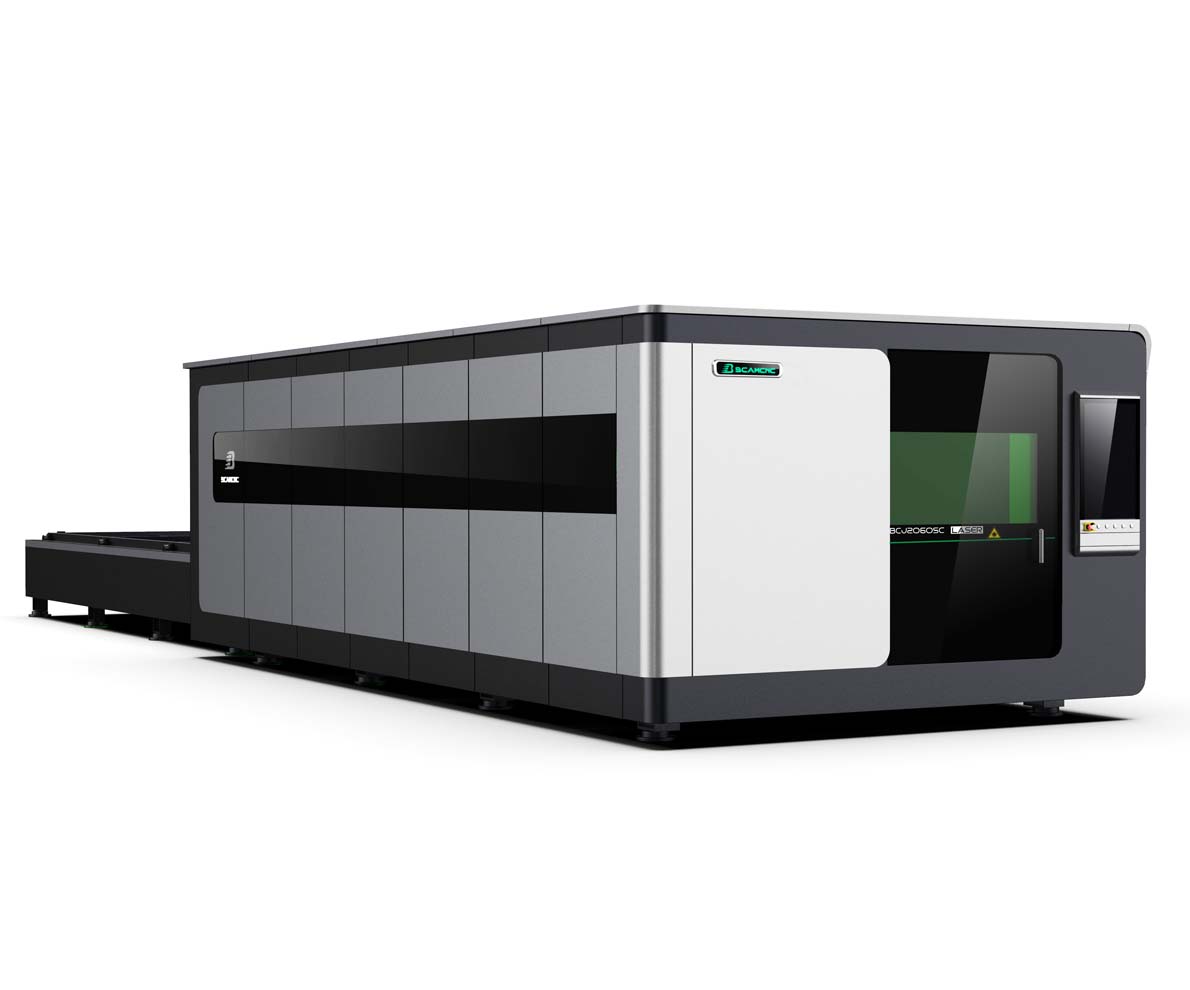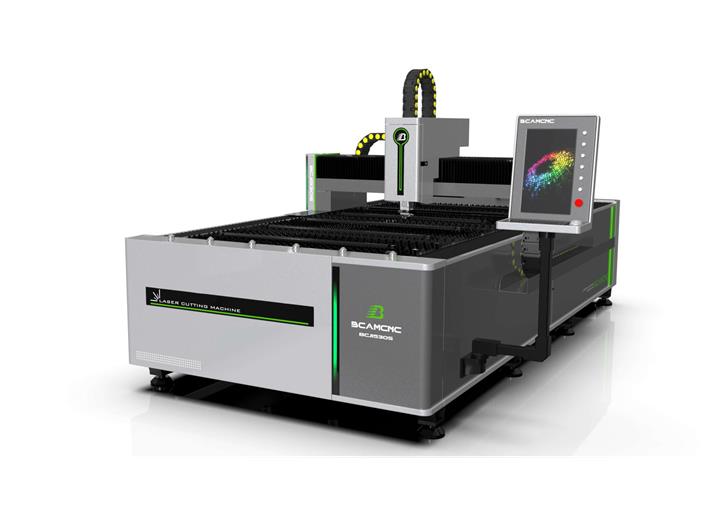- Your are here:
- NEWS
Laser cutting machine advantages and disadvantages
 Upload to:04-23 2021
Upload to:04-23 2021
What is laser cutting machine ?
The laser cutting machine is to focus the laser light emitted from the laser into a high-power density laser beam through the optical path system. The laser beam irradiates the surface of the workpiece to make the workpiece reach the melting point or boiling point, and the high-pressure gas coaxial with the beam blows away the molten or vaporized metal.
With the movement of the relative position of the beam and the workpiece, the material will finally form a slit, so as to achieve the purpose of cutting.
Fiber laser cutting machine
Types of laser cutting machine
According to the different lasers, it can be divided into: CO2 laser cutting machine, YAG laser cutting machine and fiber laser cutting machine.
According to the structure, it can be divided into: gantry type, cantilever type, manipulator type laser cutting machine, etc.
According to the power, it can be divided into: high, medium and low power fiber laser cutting machine;
According to the cutting material, it can be divided into: metal and non-metal laser cutting machine;
According to the processing dimensions, it can be divided into: two-dimensional and three-dimensional laser cutting machines
Advantages of laser cutting
Compared with other types of cutting, laser cutting has many advantages. These include:
1. Higher cutting precision and accuracy
2. Higher quality edges
3. Narrow cut width
4. Smaller heat-affected zone and less material deformation
5. Reduce material contamination and waste
6. Reduce maintenance costs
7. Higher operational safety
Compared with traditional cutting machines, laser cutting machines can cut a variety of designs with higher precision and accuracy. Since laser cutting machines can be fully controlled by CNC, they can repeatedly and consistently produce complex parts with high tolerances. Laser cutting can also produce high-quality cuts and edges, usually without further cleaning, processing or finishing, thereby reducing the need for other finishing processes.

The focused beam achieves a narrow cut width, while local heating allows minimal heat input to most materials to be cut. Smaller cuts minimize the amount of material removed, while low heat input minimizes the heat-affected zone (HAZ), thereby reducing the degree of thermal deformation. The non-contact nature of the laser cutting process also reduces the risk of mechanical deformation, especially for flexible or thin materials, and reduces the risk of material contamination. Due to smaller tolerances, narrower cut widths, smaller heat-affected areas and smaller material deformations, the design of laser-cut parts can be arranged more closely together on the material. This compact design reduces the amount of material wasted, thereby reducing material costs over time.
Although the initial investment of laser cutting equipment is usually higher than other cutting processes, the operating and maintenance costs are relatively low.Laser cutting machines can perform multiple operations and applications without the need to purchase or replace separate, custom-designed tools. This feature of laser cutting not only reduces the total cost of equipment, but also reduces the delivery time between different processes and applications.
In addition, because laser cutting is a non-contact process, compared with contact cutting processes (such as mechanical cutting or rotary die cutting), laser components have less fatigue and therefore have a longer service life. Coupled with the relatively cheap replacement of laser components, the durability of the laser components further reduces the total cost of the equipment.
Other advantages of laser cutting include reducing the risk of operator injury and creating a quieter operating environment. The laser cutting process hardly uses any mechanical components and does not occur inside the housing, so the risk of operator injury is small. Since less noise is generated during the laser cutting process, the overall working environment has also been improved.
disadvantages of laser cutting
Although laser cutting has advantages over other forms of cutting, the process also has limitations, including:
Applicable material range
Inconsistent productivity
Metal hardening
Higher energy and power consumption
Higher equipment cost
As mentioned earlier, laser cutting is suitable for all kinds of metals and non-metals. However, the material being cut and its properties usually limit the applicability of certain cutting mechanisms, auxiliary gases, and laser types. In addition, the material thickness plays an important role in determining the optimal laser power, auxiliary gas pressure, and focus position for laser cutting applications. Different materials or different thicknesses in a single material also need to adjust the cutting speed and depth during the entire cutting process. These adjustments will cause inconsistent production time and increase turnaround time, especially in mass production.
One advantage of laser cutting is that it produces high-quality cuts, which usually do not require extensive secondary cleaning, processing or finishing. Although this is advantageous in some respects, the final work hardening of laser cut edges can be problematic for some applications. For example, parts that require further treatment (such as powder coatings or paints) need to be surface treated after the laser cutting process before receiving the necessary coatings or paints. Adding this step will increase turnaround time and total processing costs.
Although laser cutting can reduce maintenance costs and material costs over time, for certain manufacturing applications, it may be more cost-effective to use other cutting processes. For example, although both metal and non-metal materials can be laser cut, laser cutting plastics will release potentially harmful and toxic gases. These emissions require air pollution control equipment, thereby increasing the necessary equipment costs. For manufacturers and repair shops, although the cost of replacing and maintaining parts is relatively low, the initial investment in laser cutting equipment is often higher compared with more traditional cutting processes. In addition, laser cutting equipment usually consumes more power and energy than other cutting processes, resulting in a further increase in operating costs. In general, high initial equipment and operating costs may make laser cutting unsuitable for low-budget operations.
BCAM Recommendation
- Previous : Knowledge you must know about laser cutting machine for metal
- Next : Laser cutting machine applications in 4 major industries


 EN
EN Ru
Ru

































